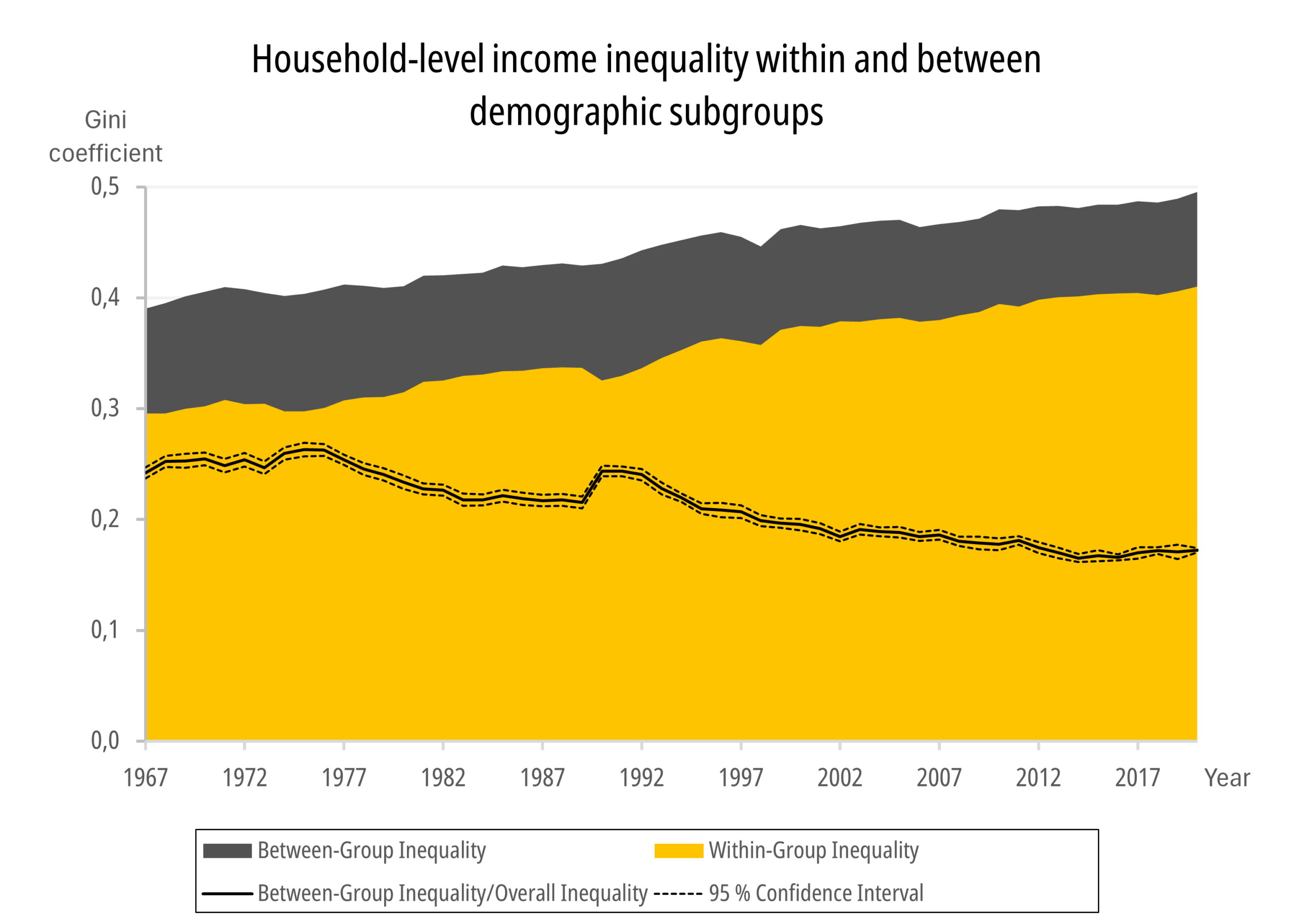
06.10.2025 |
Research
Gini Decomposition: A New Tool for Analyzing Inequality
A study by Vesa-Matti Heikkuri and Matthias Schief introduces a new subgroup decomposition of the Gini coefficient.
The Gini coefficient is the most widely used measure of inequality. It captures how evenly, or unevenly, income is distributed within a population; a higher Gini coefficient means more unequal distribution. It is often interesting to ask how much inequality in a population is due to inequality within subgroups, such as groups defined by gender, age, education level, or geographic location, versus differences in income between the groups. Subgroup decomposition of inequality is a tool that answer this question.
A longstanding open question is how to decompose the Gini coefficient into within and between-group inequality. Various decompositions have been suggested in the literature, but no consensus has yet been reached. The suggested decompositions have been criticized for counterintuitive behavior, and some researchers even claim that a well-behaving decomposition of the Gini coefficient does not exist.
In a new study, Vesa-Matti Heikkuri (Tampere University) and Matthias Schief (OECD) develop a theory for the subgroup decomposition of inequality indices and derive a new decomposition formula for the Gini coefficient from first principles. This decomposition is the only way to decompose the Gini coefficient into within and between-group inequality that satisfies a list of properties that guarantee intuitive behavior.
To demonstrate the new decomposition, the researchers applied it to United States household income data from 1967 to 2021. They found that while household income inequality has increased over time, the share of inequality that can be explained with demographic characteristics such as age, gender, race, and the level of education has decreased.

The article Subgroup Decomposition of the Gini Coefficient: A New Solution to an Old Problem is forthcoming in Econometrica.